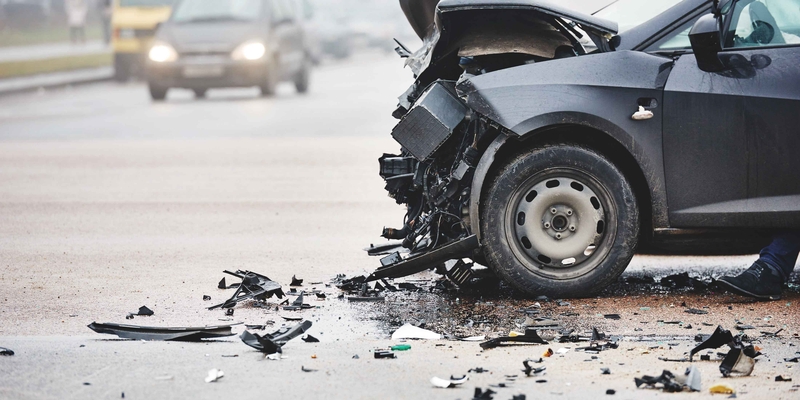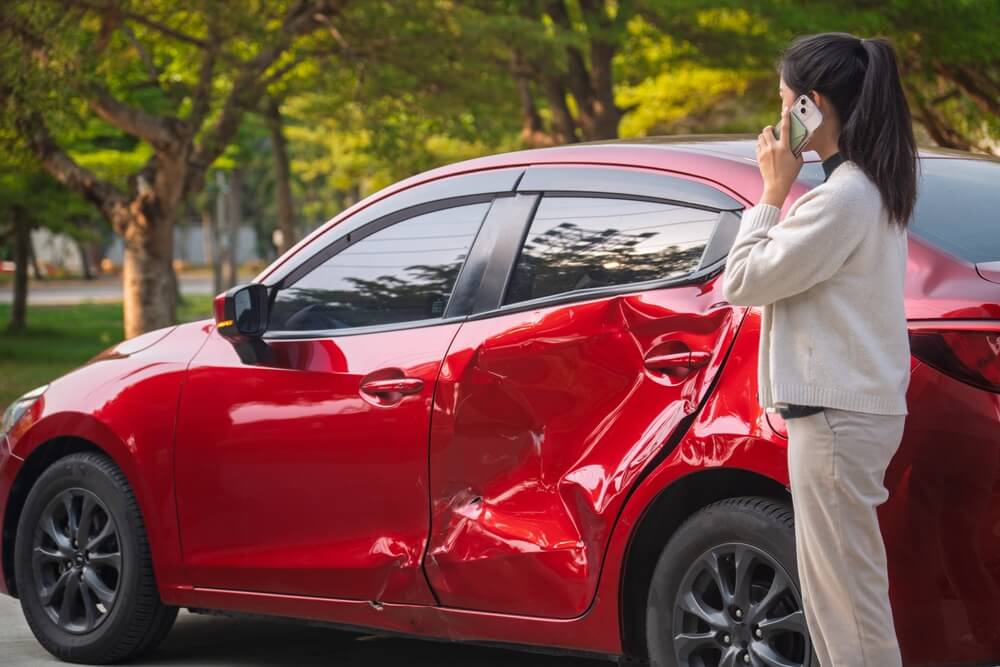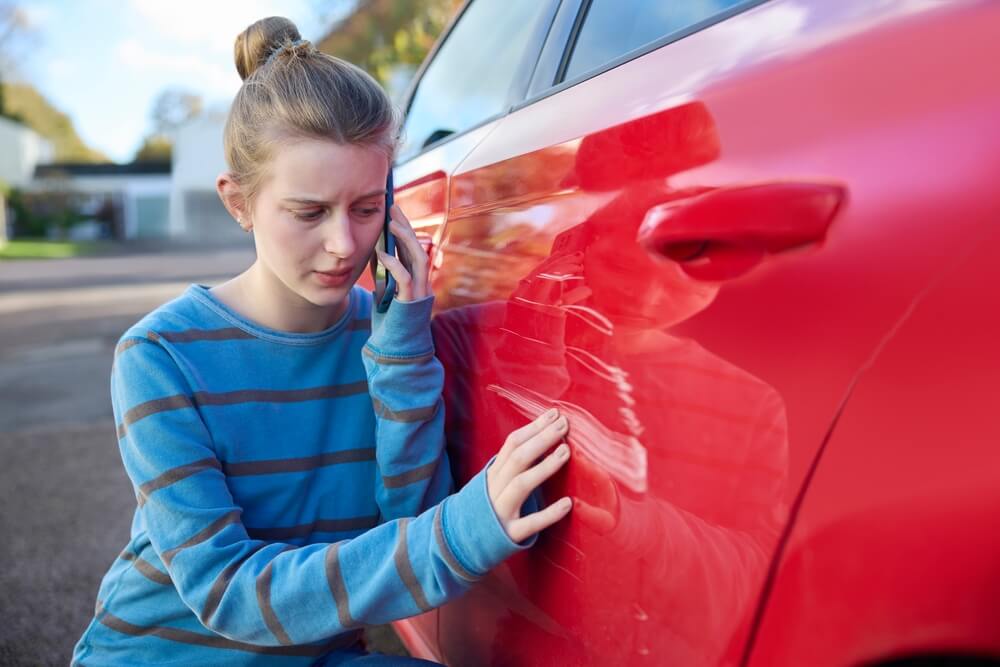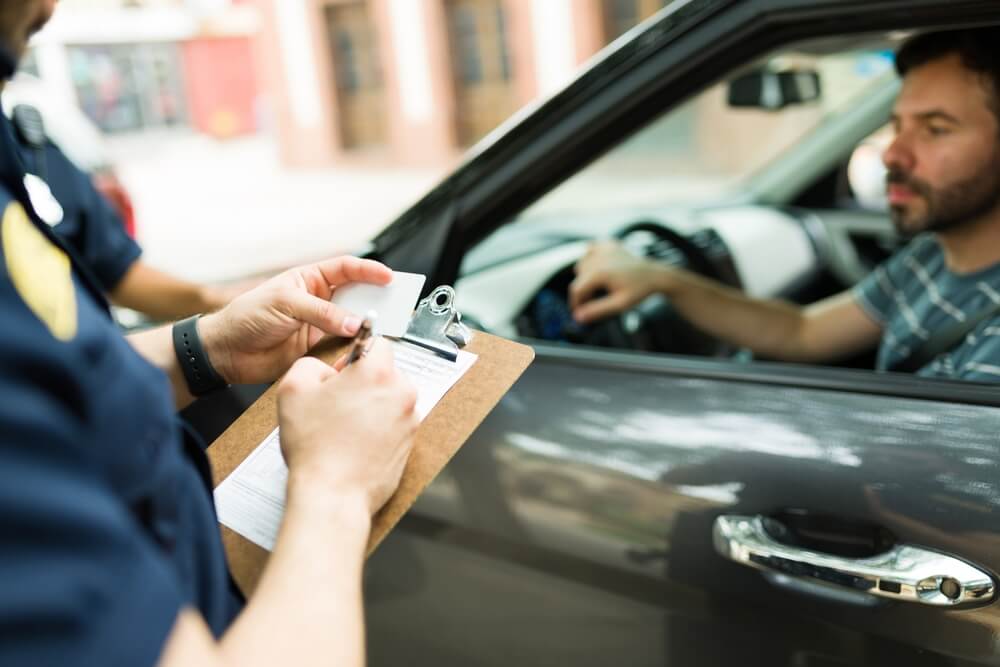
If you are not redirected within 30 seconds, please click here to continue.
Samedi: 10h – 16h HAE

If you are not redirected within 30 seconds, please click here to continue.
If you are not redirected within 30 seconds, please click here to continue.
How will my car insurance policy respond to a hit and run?

This article has been updated from a previous version.
Being involved in any type of collision is tough, but a hit and run can be particularly overwhelming.
Hit and run incidents occur when a driver causes damage or injury and leaves or flees the scene of the accident without providing identification or assistance.
Whether it takes place on a busy road or in a parking lot, the aftermath of being involved in a hit and run can leave you with many questions about insurance coverage, premium impacts, legal actions, and the steps you should take as the victim. Here’s everything you need to know as a Canadian driver.
If your insurance company determines that you were not at-fault for the hit and run, it generally will not impact your car insurance premiums. For example, if your parked car is damaged and the driver responsible flees the scene, this will not influence your rates as long as the police and insurer find that you’re not at fault.
It’s important for you to report the collision as soon as possible; failing to do so might complicate your insurance claim.
Reporting deadlines and legal obligations
As of January 1, 2025, Ontario law now requires collisions to be reported to the police or a collision reporting centre only if the damage exceeds $5,000 (previously $2,000).
However, in hit and run cases, the rules are a little different.
Police report: Under Section 200 of the Highway Traffic Act (HTA), you are required to report a hit and run immediately, or as soon as it is safe to do so, especially in cases involving injury, death, or criminal activity. This applies regardless of whether the damage is minor or exceeds the $5,000 collision reporting threshold for general accidents. Hit-and-runs are treated as criminal offenses, so they must be documented promptly.
Notify your insurance provider: Once you’ve reported the hit-and-run to the police, the next step is to contact your insurance company. You must do this within 7 days of the incident (specific deadlines may depend on your insurer, so check your policy).
When filing your claim, be sure to provide:
- A copy of the police or collision reporting centre report.
- Photos of the damage and the scene, if possible.
- Witness statements or security footage, if available.
Most insurance policies include coverage for hit-and-run incidents, but make sure you meet reporting deadlines to make your claim valid. If you’ve added options like a hit-and-run deductible waiver, confirm with your provider on how these apply.
There’s no good reason to hide the fact that you were a victim of a hit and run from your insurance company. Insurance companies don’t like being lied to, and it could prompt them to cancel your coverage if you don’t disclose that your vehicle was involved in a collision.
Related: What are the benefits of joining a roadside assistance program?
Will I have to pay for damage to my vehicle resulting from a hit and run?
Auto insurance exists for situations just like this.
Auto insurance can cover damage up to a certain amount from a hit-and-run if you carry the right policy options. Canadian drivers typically need collision coverage to pay for repairs after such an event. However, you will likely need to pay your deductible because your insurer cannot recover costs.
A deductible is what you pay out of pocket if you file a claim.
For instance: If repairing your vehicle costs $10,000 and your collision deductible is $1,000, you must pay the $1,000 out of pocket before the insurer covers the remaining $9,000.
Pro tip: Some insurance companies may offer a hit-and-run deductible waiver if you report the collision within a reasonable time frame. This add-on would prevent you from having to pay your deductible in a situation where you’re the victim of a hit and run.
It’s worth noting that Direct Compensation Property Damage (DCPD) coverage applies in provinces like Ontario, but it only covers damages when the other driver is identified. For unidentified drivers, you will need collision coverage to file your claim.
If you’re injured from the hit and run
Ontario’s no-fault auto insurance laws mean you will receive accident benefits through your insurance provider, such as income replacement and rehabilitation costs, regardless of who was at fault for the collision.
However, hit-and-run incidents with unidentified or uninsured drivers may require additional protection. Policies like Uninsured Automobile Coverage or the optional OPCF 44R Family Protection Coverage provide extra financial security if your damages exceed basic coverage limits.
You may want to hire a personal injury lawyer to help you receive accident benefits.
Updates to deductibles and thresholds
The statutory deductibles and monetary thresholds for car accident claims in Ontario have been adjusted for inflation. For instance:
- The 2025 deductible for general damages is $46,790.05, an increase from 2024.
- The monetary threshold to bypass the deductible now stands at $155,964.54.
These thresholds are critical for hit-and-run victims suffering serious injuries seeking compensation for pain and suffering.
Related: What is third party liability and what does it cover?
Penalties for committing a hit and run
The penalties for drivers who leave the scene of a collision remain severe under the Criminal Code of Canada and provincial laws. Ontario’s specific penalties for fleeing the scene include:
For accidents without injuries:
- Fines up to $2,000.
- Potential imprisonment for up to six months.
- License suspension for up to two years.
For accidents involving injuries or fatalities:
- Fines up to $10,000.
- Imprisonment for up to five years.
- Lifetime license suspension in the most serious cases.
Additionally, starting in 2025, all impaired drivers convicted of causing harm in collisions must install an ignition interlock device, even for first-time offenses
Learn more: Protecting yourself from uninsured drivers
How to make a hit-and-run insurance claim
To make the insurance claims process as easy as possible after a hit and run, follow these steps:
- Contact the police: Provide details on the accident, including the location, time, vehicle descriptions, and witness accounts. Request a copy of the police report for your claim.
- Document the scene: If you see the hit and run happen, try to remember the licence plate and model/make of the car. Take photos of any vehicle damage, surrounding debris, and for nearby security cameras that may have documented the incident.
- Gather witnesses: If there were witnesses, ask them to stick around and talk to the police. Save their contact information so the police or insurer can follow up.
Having credible witnesses can benefit your case in two ways:
- Reduce or eliminate your deductible by proving the at-fault driver’s identity.
- Strengthen your eligibility for full accident benefits.
These pieces of information will all be helpful for the police report, and in turn, making sure your premium isn’t affected. Also, take down the officer’s name, badge ID and contact information for your insurance company, in case they need to contact the officer.
A hit and run is a scary occurrence, but luckily, it doesn’t affect your insurance premium, and most insurance policies will cover most of the claim costs.
Whether it’s ensuring you’ve got OPCF 44R coverage or navigating recent updates like Ontario’s higher reporting thresholds, staying informed helps put you back in the driver's seat after a hit-and-run.
If you’re concerned about your coverage, reach out to your insurer to confirm your policy options and ensure you’re prepared for the unexpected.
Read next: Your car may be worth less after an accident. Learn about diminished value
Don't waste time calling around for auto insurance
Use Rates.ca to shop around, and compare multiple quotes at the same time.
Get money-saving tips in your inbox.
Stay on top of personal finance tips from our money experts!










